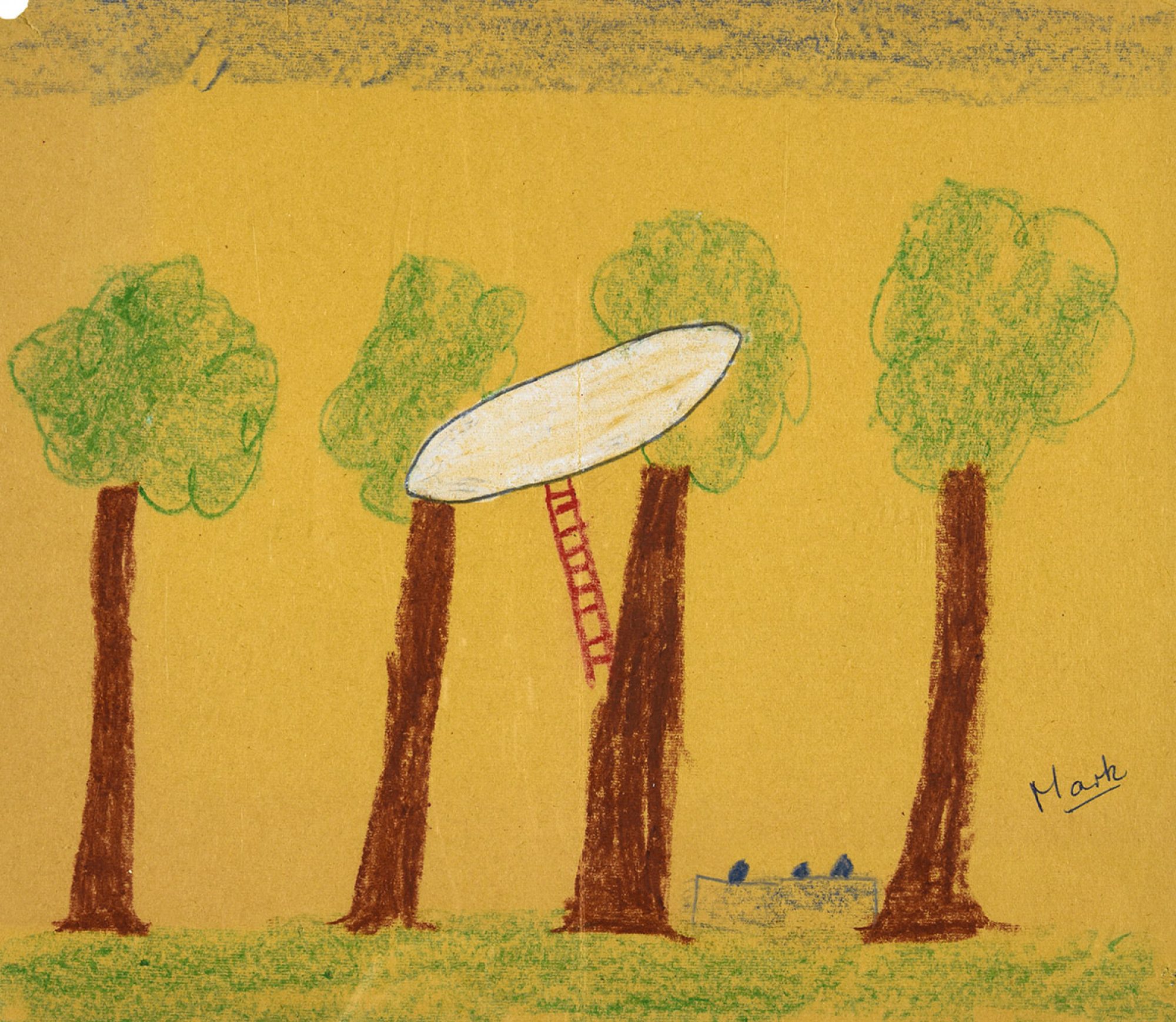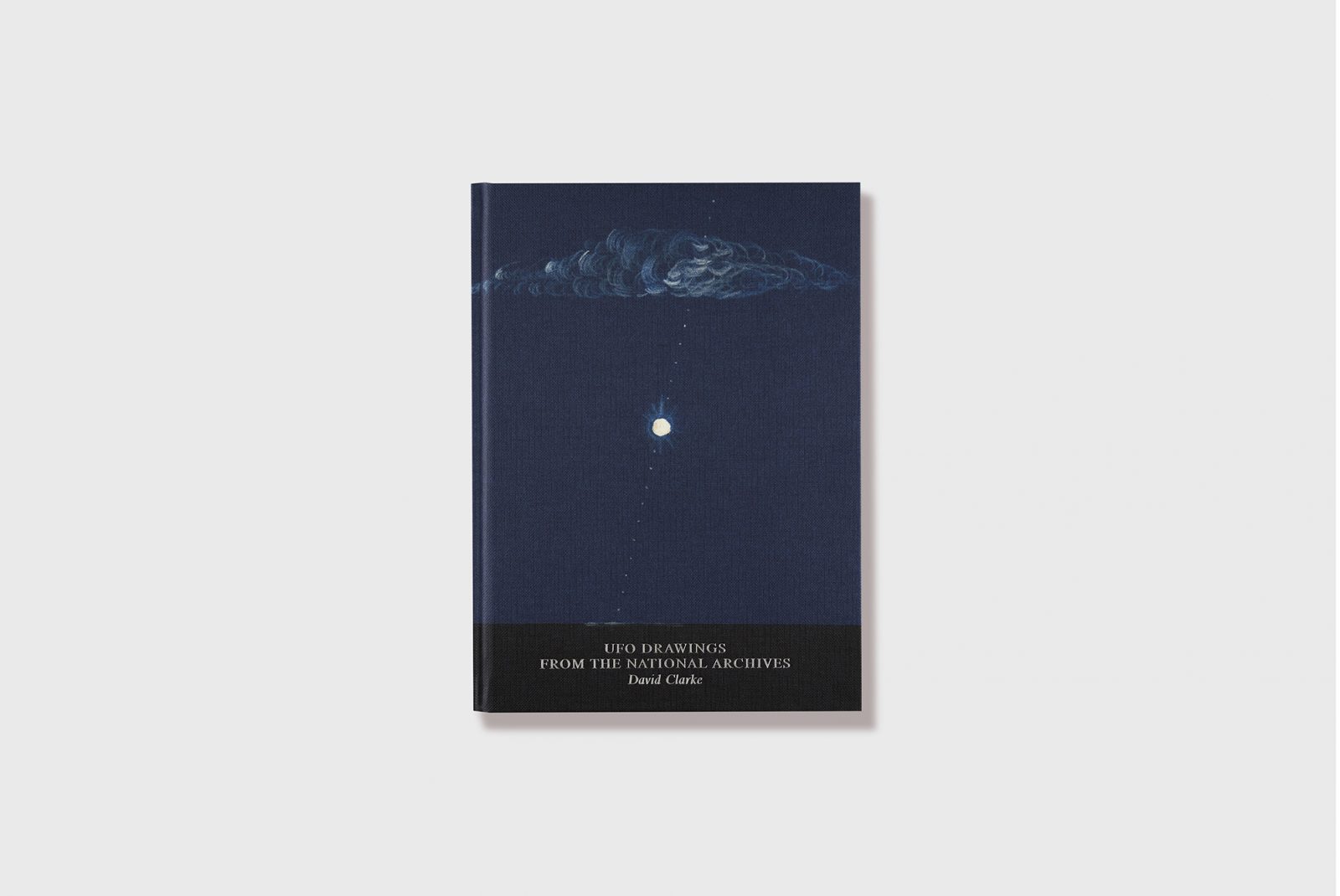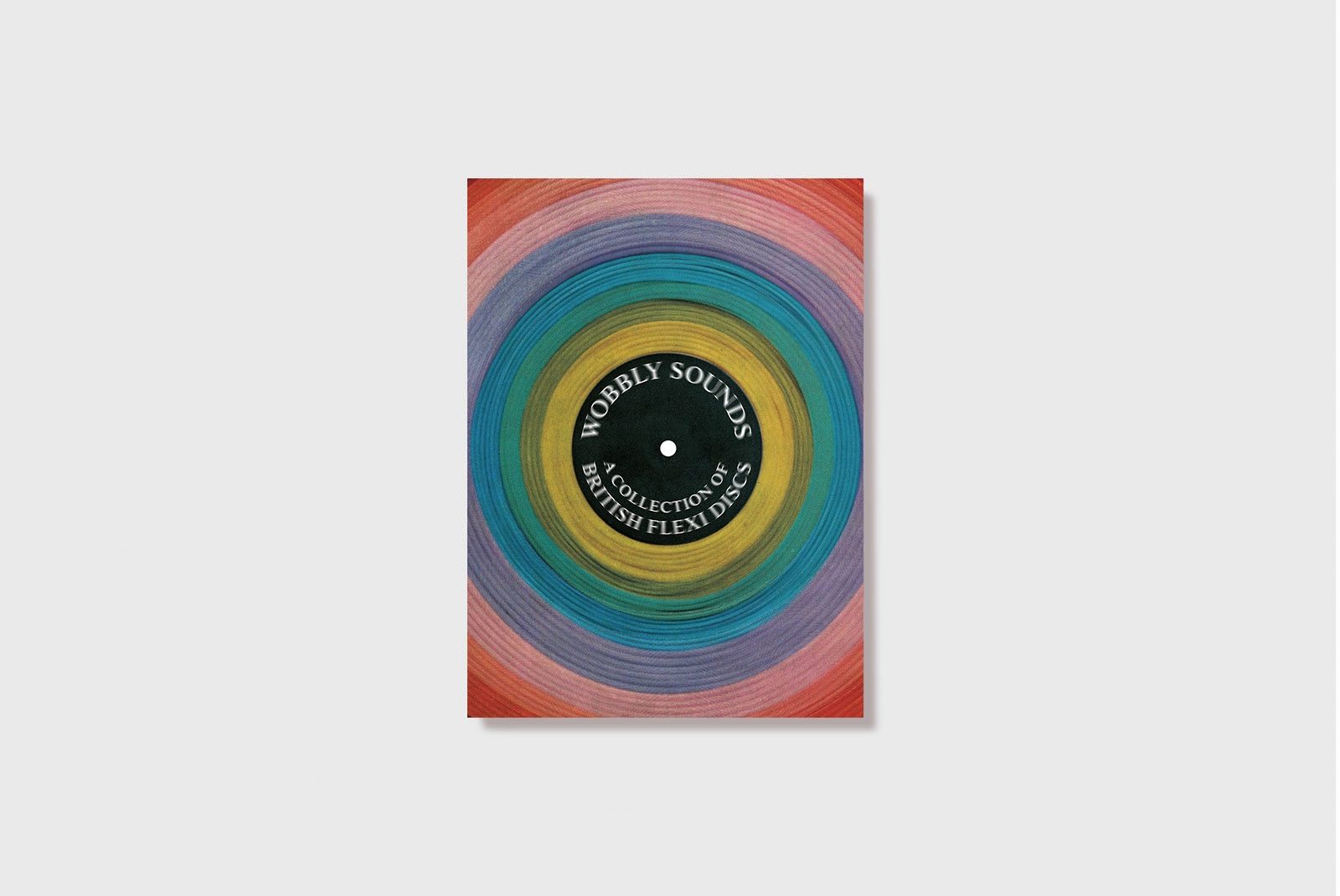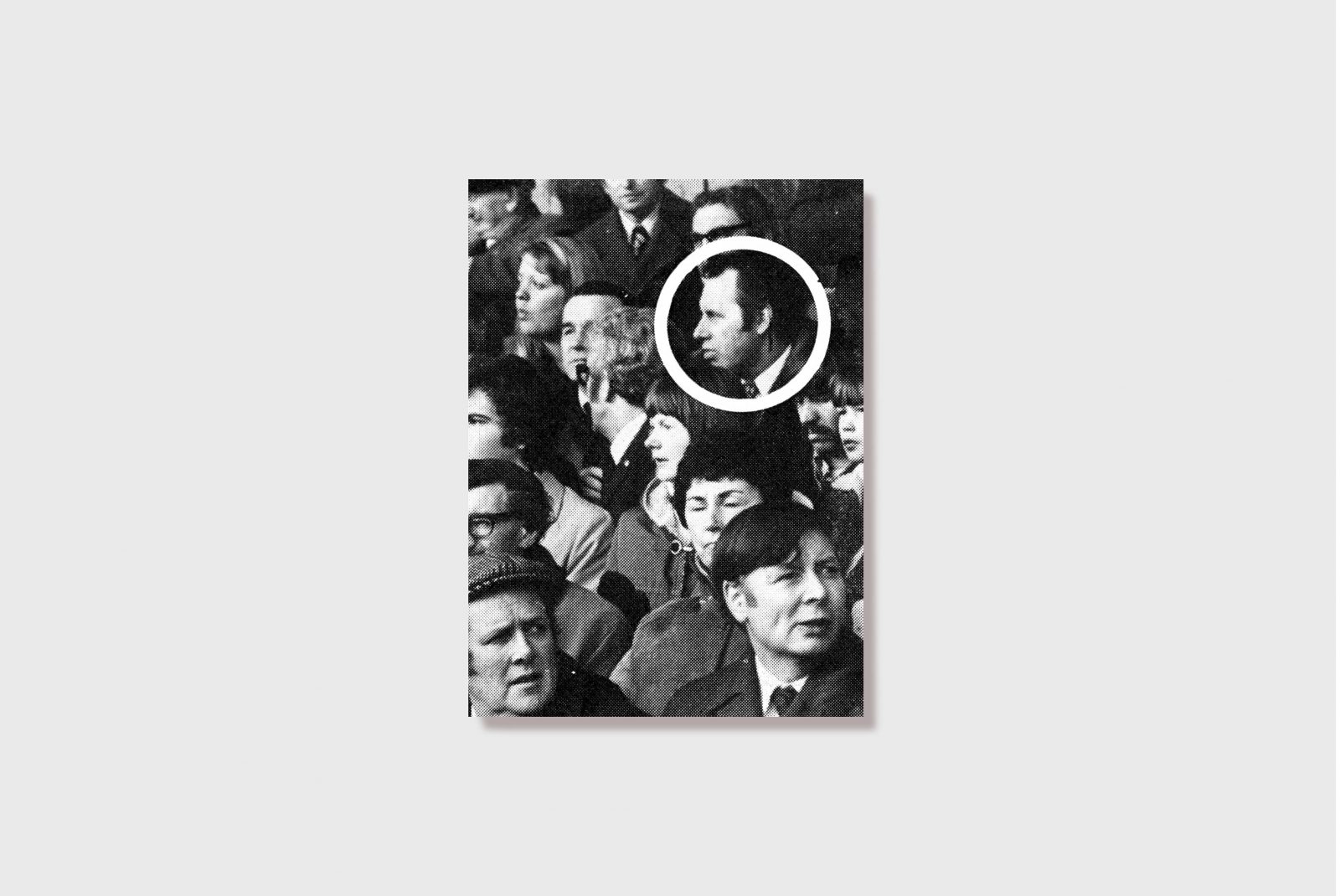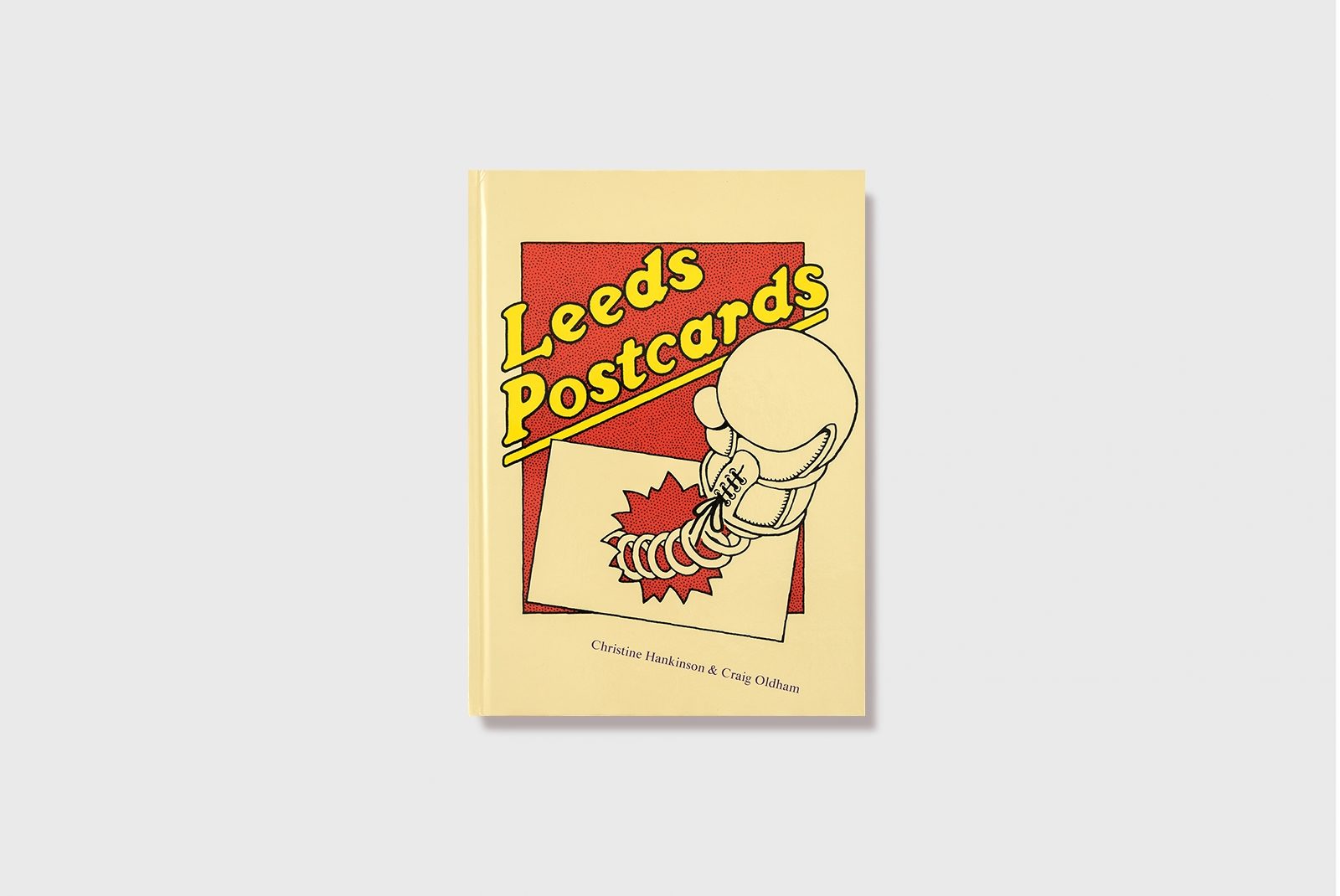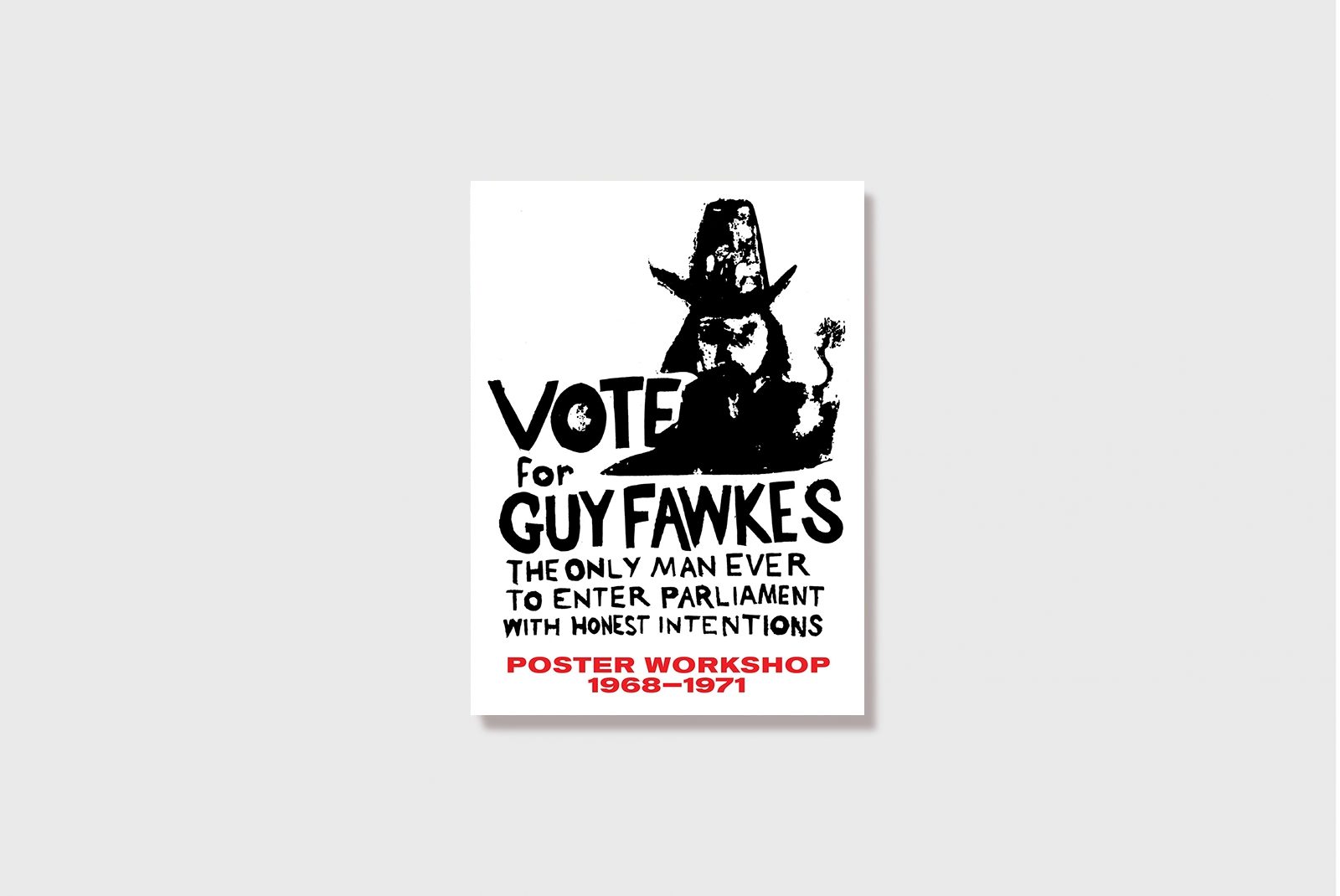From 2009-2013 I acted as curator for the special project that involved the transfer of 210 surviving files from the MoD’s archives into the public domain. The striking images in UFO Drawings from The National Archives were sourced from these and an older collection of UFO files, some dating back to the Second World War, that have been opened to public inspection under the 30 year rule.
Some of the most remarkable drawings in the book were produced by schoolchildren. For example one lunchtime in October, 1977, ten Cheshire youngsters, aged seven to 11 years, saw an elliptical UFO hovering in trees beside the playground of Upton Primary School in Macclesfield, before it rose into the sky and vanished.
Their teacher, Mrs Hindmarsh, ushered the children inside and asked to draw what they had seen, separating them to ensure that no copying took place. The youngsters used pencils and coloured crayons to produce the images that ended up in a MoD file.
Their drawings are so clear and striking that I selected them as one the highlights of the book. In this case their teacher passed the dossier to Cheshire Police and the MoD’s UFO desk. In his covering letter the police officer said there was ‘a remarkable similarity in these sketches with regard to the UFO and its location between two trees’.
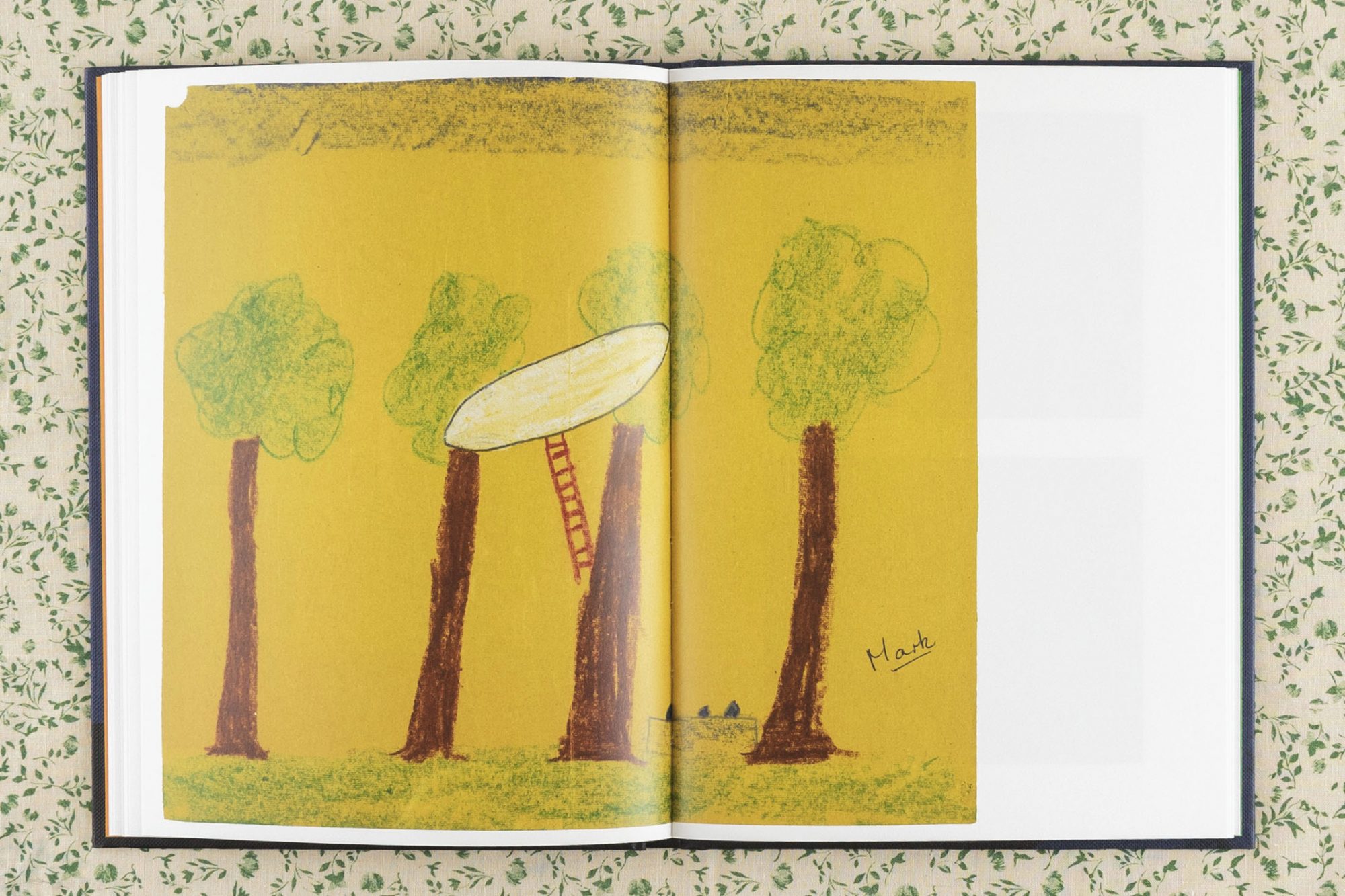
One of the drawings produced by children in Macclesfield, Cheshire, in 1977. The National Archives DEFE 24/1206
But this was just one example from a series of sightings made from schools during 1977. Another file contains drawings and letters sent to the MoD by youngsters and their teacher from North Wales earlier in the year.
‘We were playing at netball with Mrs Williams in the yard and she was showing us how to throw the ball into the net when I saw an object high in the sky.’
In immaculate handwriting, ten-year-old Gwawr Jones reported her UFO experience in a letter addressed to RAF Valley in North Wales.
Her letter, endorsed by the teacher, arrived with a collection of drawings showing an identical flying saucer, produced by her schoolpals.
‘I shouted at the others and they looked up and saw it,’ the account continued. ‘It had a black dome on top and a silver cigar-shaped base. It was travelling smoothly across the sky in a northerly direction. It remained in our sight for about 3 minutes. Then it went behind the only cloud in the sky and reappeared again for about 1 minute, then disappeared’.
Gwawr was one of nine youngsters, aged 8-11 years, who saw the silent object from Rhosybol School in Anglesey, North Wales, on the afternoon of Wednesday, 16 February 1977. Their teacher, Mair Williams, told the Western Mail: ‘It was a really bright afternoon and the object was flying very high towards Bull Bay…I took the children back into school separated them and then told them to draw what they had seen. It was really astonishing – their drawings were all similar. I never believed in these things until I saw this!’
These extraordinary stories were among dozens that reached the MoD’s UFO desk, S4 (Air) in 1977. A covering note, from RAF Valley, adds ‘[we] can offer no positive explanation or identification’.
Viewed in isolation, this story would appear much like the other 435 sightings logged by the British government half a century ago. But with the benefit of hindsight it is just one of a previously unnoticed cluster of eerily similar experiences reported by small groups of unrelated schoolchildren, in the space of six months.
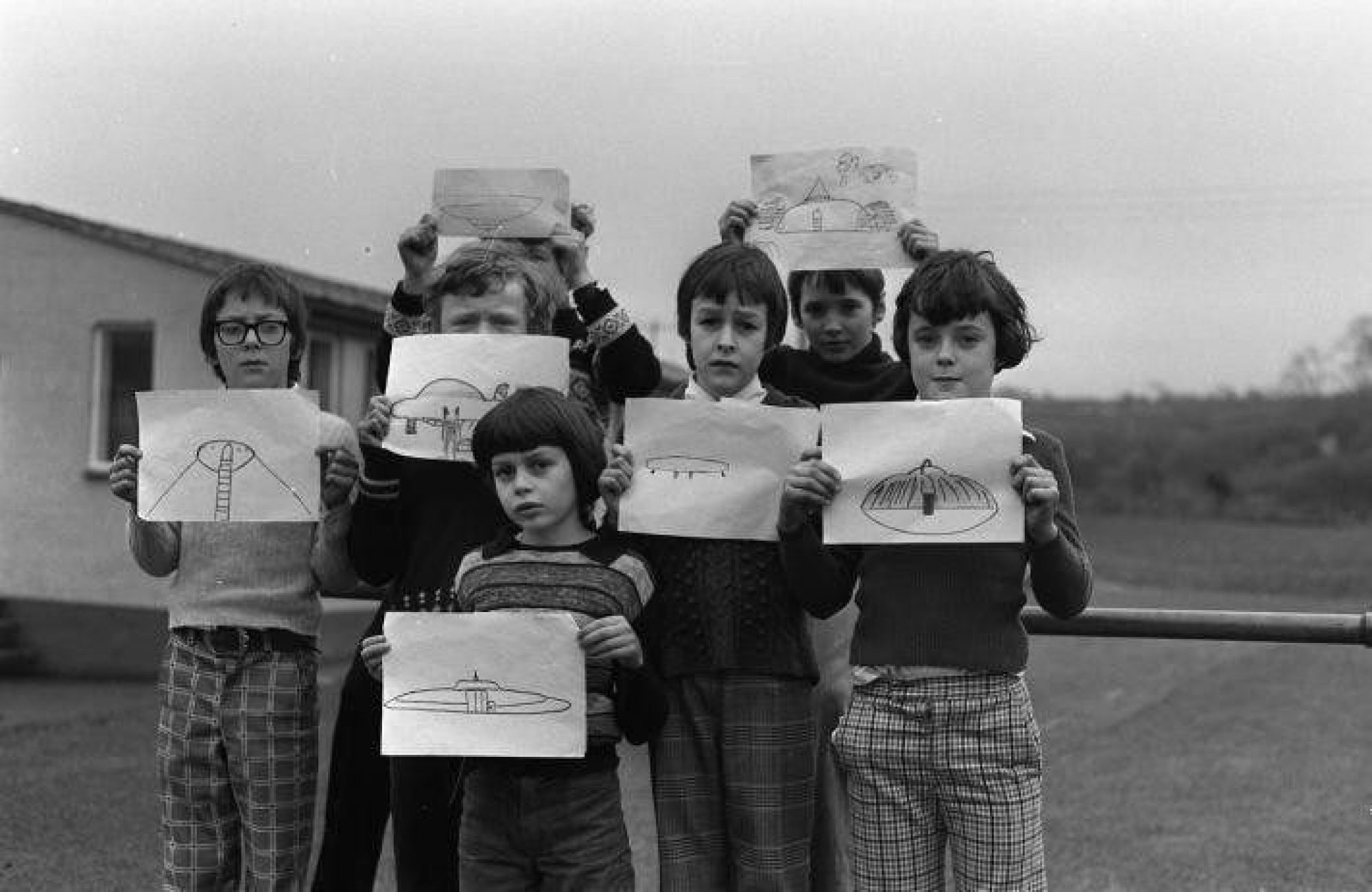
Children from Broad Haven Primary school with their UFO drawings 1977
What on Earth, or off it, was going on? What sparked off this mini-flap? What inspired youngsters of a similar age, from across the UK, to look into the sky and see unidentified flying objects moving above their schools and playgrounds?
The arrival of Steven Spielberg’s science fiction epic Close Encounters of the Third Kind (re-released in 2017 to mark its 40th anniversary) was a whole year away. The original Star Wars movie opened in UK cinemas in December, some months after this mini-flap.
I was ten years old in 1977 and my introduction to UFOlogy came not from movies but from the TV screen. In May, BBC1 ran the Hugh Burnett documentary Out of this World in a prime-time slot that was my first exposure to flying sorcery. Burnett’s programme included interviews with UFO witnesses and contactees plus classic footage from around the world. Elsewhere on TV the year opened with the fourth incarnation of Doctor Who, Tom Baker, grappling with the Robots of Death on a distant planet.
But I suspect a more immediate inspiration for the spate of playground UFO sightings came from the children’s peers – via mass media reports from the so-called West Wales flap or ‘Welsh Triangle’ as it was dubbed by the tabloids.
Early in February groups of children at three Welsh primary schools reported UFO sightings. But only the story from Broad Haven primary school was widely covered by the media, with the youngsters interviewed live on national television at the scene.
In this case a group of fifteen children, mainly ten year old boys, saw a shiny cigar-shaped UFO on the ground – not in the sky – in fields behind their school during their lunch break on Friday, 4 February 1977.
It was raining at the time and the boys were playing football when someone pointed out the object, partially hidden by trees and shrubs. Two of the group said the elongated object had a silver dome with a flashing light on the top. Six of the group said they saw a tall man, dressed in a silver space-suit, standing beside the UFO. Evidently scared, the children ran back to the school but were not initially believed by the adults. After school finished, groups of youngsters went UFO spotting and later, supported by their parents, they visited the local police station.
Drawings made by the children were sent to the MoD and the originals are today preserved in scrapbook at the school. This archive includes a contemporary account from the school diary, written in the third person by head-teacher Ralph Llewellyn, who became the focus of a media scrum. It reveals that he interviewed 15 children separately on the Monday, 7 February, and examined their drawings and notes.
Their drawings are often described as ‘remarkably similar’ but although made independently they were not produced until three days after the sighting, so the children had the entire weekend to discuss what they had seen. Nevertheless, Mr Llewellyn concluded they were telling the truth:
‘After allowing for variations and embellishments [the head-teacher] is loathe to believe that the children are capable of a sustained sophisticated hoax; that they did see something they hadn’t seen before he is prepared to accept. He himself, while seeking a natural explanation of the incident, is prepared to keep an open mind on the subject’.
Reproduced from David Clarke's blog: drdavidclarke.co.uk
